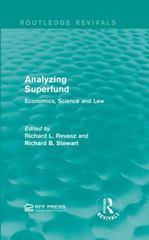Question
Part A : During the last recession the Department of Labor was asked to evaluate four public policies to deal with the labor market consequences
Part A: During the last recession the Department of Labor was asked to evaluate four public policies to deal with the labor market consequences of the economic downturn.
a. Cut the employer share of social security taxes by 0.5-percent.
b. An employment tax credit of $12 per person day worked in excess of the previous year's employment.
c. An increase in the taxable base for unemployment insurance contributions to offset the depletions included by the recession.
d. A tax on group health insurance premiums to be used as a trust fund to continue group health coverage for employees on layoff.
Using simulation methods and measures of elasticity of labor demand estimates the analysts found the following impacts:
- For policy one the employment effect was growth of approximately 200,000 jobs for four quarters.
- For policy two, the employment effect was a growth of approximately 800,000 jobs for four quarters.
- For policy three, the employment effect was a decline of approximately 50,000 jobs for four quarters.
- For policy four, the employment effect was a decline of approximately 38,000 jobs for four quarters.
Part B: As a policy analyst for the Congressional Budget Office, you have been asked to estimate the potential costs of occupational licensing to the U.S. economy. Using demand analysis, a basic examination of the national costs of licensing could be developed as follows: Suppose that the entire 10 percent wage premium is from market power (as opposed to greater productivity from enhanced human capital), and further assume that labor supply is perfectly elastic and the labor demand elasticity is 0.5. Hypothetically, assume that the Census data suggests that there are approximately 68 million licensed workers in the U.S. Also assume that the average earning is $50,000. Calculate the potential job loss and the annual cost to consumers as a consequence of occupational licensing.[1]
[1] Hint: Recall that the movement up the demand curve is the change in wages times the labor demand elasticity times the number of workers. To calculate the costs, what would a license worker make if they were unregulated? See Endnote 3 in "Reforming Occupational Licensing Policies"
Step by Step Solution
There are 3 Steps involved in it
Step: 1

Get Instant Access to Expert-Tailored Solutions
See step-by-step solutions with expert insights and AI powered tools for academic success
Step: 2

Step: 3

Ace Your Homework with AI
Get the answers you need in no time with our AI-driven, step-by-step assistance
Get Started


